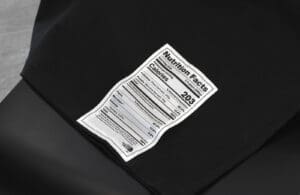 Across the globe, companies continue to pledge to reduce their emissions, capture their emissions, and help to reduce the negative impacts of climate change. For many companies, this process begins with an overhaul of their manufacturing processes, looking at ways to promote sustainable manufacturing. Sustainable manufacturing is one step in the process of building sustainable supply chains.
Across the globe, companies continue to pledge to reduce their emissions, capture their emissions, and help to reduce the negative impacts of climate change. For many companies, this process begins with an overhaul of their manufacturing processes, looking at ways to promote sustainable manufacturing. Sustainable manufacturing is one step in the process of building sustainable supply chains.
Not all emissions are created equally. Scope 1 emissions include all direct emissions that are generated from sources that are directly owned or controlled by an organization. Scope 2 emissions include all indirect emissions from the generation of the electricity purchased and used by an organization at local or international sites. These emissions can be measured as location-based or market-based. The bulk of emissions — often more than 90 percent — come from the companies’ Scope 3 emissions. Scope 3 emissions are emissions not generated by the company itself but by a company’s suppliers, carriers, and contract manufacturing partners. This means that supply chain emissions can account for up to 90 percent of a company’s carbon footprint.
Companies are turning to sustainable manufacturing practices to help alleviate some of these emissions. What exactly is sustainable manufacturing? According to the United States Environmental Protection Agency (EPA), sustainable manufacturing is the creation of manufactured products through economically-sound processes that minimize negative environmental impacts while conserving energy and natural resources. Sustainable manufacturing also enhances employee, community, and product safety.
I recently saw an exhibit at the Peabody Essex Museum (PEM) titled Our Time on Earth. Part of PEM’s Climate + Environment Initiative, this traveling exhibition from the Barbican Centre in London celebrates the power of global creativity to transform the conversation around the climate emergency. The structures and design featured in the exhibition are sourced from biodegradable, sustainable materials to minimize carbon footprint. The exhibit featured a number of companies that are creatively utilizing sustainable manufacturing of textiles and building materials to reduce emissions and promote a circular fashion industry.
The first example was the Planetary Equilibrium Tee, which was a collaboration between the North Face and Spiber. Like basically every t-shirt that all of us own, this one is partly made of cotton. But, it has another interesting, and new ingredient: brewed protein fibers. These proteins are produced in a similar way that beer is brewed – a protein structure produced by microbes in a fermentation process. But instead of a delicious beverage, the end result is a garment that eliminates the need for harmful extraction processes from nature.
A second example of sustainable manufacturing is the use of seaweed spun yarn. Kelp is one of the most regenerative organisms on the entire planet, with multiple species growing in large underwater forests. With so much kelp readily available, it is a sustainability gold mine. Kelp can be turned into fibers and spun into yarns that are incredibly strong, but also biodegradable. These yarns allow designers and manufacturers to promote a circular fashion industry while lowering their carbon footprint. And these designers and manufacturers are also turning to living organisms again for all-natural pigments. Microbes can now produce natural dyes which are better for the environment, and stack up against synthetical chemical dyes which are more harmful to the environment.
A third example of sustainable manufacturing was the little black dress created by a partnership bewteen LanzaTech and ZARA. The dress on display was the first ever garment to feature a polyester fabric which is partly biologically derived, instead of coming from 100 percent virgin fossil resources. The process includes capturing carbon emissions and feeding them to microbes, which can turn them into useful chemicals for manufacturing.
The last example is the use of mycelium for a variety of products. Mycelium is a root-like structure of a fungus consisting of a mass of branching, thread-like hyphae. Simply put, mycelium is the network of roots under the ground from which mushrooms grow. That means that the supply is immense, and it can also be grown in a bioreactor, needing only food waste as a nutrient source. The mycelium is processed and rolled out as a “mushroom leather.” This process avoids the use of harmful chemicals that are used




















